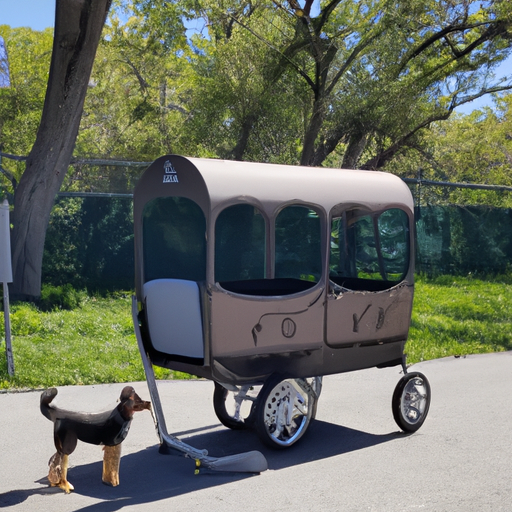Dogs are more than pets; they’re family. Seeing our four-legged family members struggle with mobility issues can be heartbreaking. However, innovative solutions such as wagons for dogs who can’t walk, have made it possible for these beloved pets to continue enjoying life’s simple pleasures like a walk in the park or a trip to the beach. This comprehensive guide will explore everything you need to know about dog wagons, including the benefits, what to look for when buying, and how to introduce your dog to its new wagon.
- Table of Contents
- Understanding Mobility Issues in Dogs
- The Benefits of Dog Wagons
- Factors to Consider When Buying a Dog Wagon
- How to Train Your Dog to Use a Wagon
-
Frequently Asked Questions
-
Key Takeaways
- Dog wagons provide a means for mobility-challenged dogs to continue participating in outdoor activities.
- Important factors to consider when purchasing a dog wagon include size, design, material, and the specific needs of your dog.
- With patience and positive reinforcement, you can help your dog become comfortable using a wagon.
Understanding Mobility Issues in Dogs
As dogs age, they often experience mobility issues, but young dogs can also be affected due to conditions like hip dysplasia, arthritis, or injury. Dog wagons serve as a practical solution to help these pets regain a sense of normalcy. According to PetMD, mobility issues in dogs can significantly affect their quality of life, but with the right support and equipment, they can lead fulfilling lives.
The Benefits of Dog Wagons
Dog wagons are not just for transportation; they come with several benefits:
- Improved Quality of Life: Wagons allow dogs to participate in family activities, improving their mental and emotional well-being.
- Physical Health: By enabling outdoor excursions, wagons help dogs maintain a healthy weight.
- Comfort: The best wagons come with cushioning and smooth-rolling wheels for a comfortable ride.
The OneTopDog website offers a wide variety of wagons and mobility aids designed to meet the needs of dogs with mobility issues.
Factors to Consider When Buying a Dog Wagon
When purchasing a dog wagon, consider the following:
- Size: The wagon should be spacious enough for your dog to sit, lie down, and turn around comfortably.
- Design: Look for a wagon with a low entry point to make it easy for your dog to get in and out.
- Material: The wagon should be made of durable materials to withstand the weight of your dog and the elements.
- Wheels: The wheels should be sturdy and able to handle different terrains.
You can find more information on how to choose the right wagon for your dog here.
How to Train Your Dog to Use a Wagon
Training your dog to use a wagon requires patience and positive reinforcement. Here are some steps to follow:
- Introduction: Allow your dog to sniff and explore the wagon.
- Practice: Encourage your dog to enter the wagon by placing treats inside.
- Short Trips: Start with short trips around the house or yard.
- Gradual Increase: Gradually increase the duration and distance of the trips.
For more training tips, visit this page.
Frequently Asked Questions
1. Can my dog use a wagon if it has health issues?
Yes, but it’s best to consult with your vet before introducing your pet to a dog wagon.
2. How do I clean and maintain a dog wagon?
Most wagons come with removable and washable cushions. For the frame, use a damp cloth and mild soap.
3. Where can I buy a dog wagon?
You can purchase a dog wagon online or at pet stores. OneTopDog offers a variety of options to suit different needs and budgets.
In conclusion, dog wagons are a compassionate solution for dogs dealing with mobility issues. They provide an opportunity for your furry friend to continue enjoying outdoor activities, which contributes to their overall wellness. Choose a wagon that best suits your dog’s size and needs, and remember that training your dog to use the wagon requires patience and positive reinforcement.



